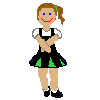

From the 10th century onward, the medieval Church had an elaborate form of sacred music drama, performed on particular feast days by the clergy in costume. The dialogue was chanted in plainsong. These performances had every element of opera except that of instrumental accompaniment.
Outside the Church, and nearer to the time of opera proper, performances of mystery and miracle plays made enough of music (instrumental and vocal) to show distinctly operatic ingredients. Out of this grew, especially in Italy, a special type of acted oratorio or allegorical drama with music. The most famous of these was Emilio de' Cavalieri's "La Rappresentazione di anima e di corpo," performed in Rome in February 1600. The "soul" and the "body" of the title are impersonated by human characters, and so are various abstractions, such as virtues and vices.
Opera remains popular to this day.
